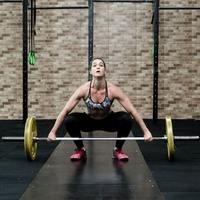Your
choice in indoor pool
dehumidification systems is an
important one, with far reaching ramifications. Preventing mold proliferation,
safeguarding your pool room’s structure and contents against corrosion and
deterioration, and protecting you from high energy costs and system failure,
matching the right dehumidifier to your precise application is key to ensuring
longevity and satisfaction with the performance of each unique system. With so
many on the market, however, the selection process can be quite confusing. How
can you find the right indoor pool dehumidification system for your pool room?
Look
to Industry Leaders in Pool Dehumidification
- Dectron Dehumidification
UnitsA global provider of custom and semi-custom systems, Dectron specializes in dehumidification, indoor air quality (IAQ), and precision HVAC systems across a range of industries, from recreation and hospitality to medical and industrial applications. Offering some of the best humidity control solutions on the market today, Dectron solutions include…
- Dectron Dry-O-Tron: This mechanical system controls humidity, re-harnessing energy by-products to maintain comfort.
- Dectron Eco-Tron: This custom integrated system offers not only air conditioning and dehumidification, but integrates energy recovery techniques and serves as a makeup air system as well.
- Dectron Circul-Aire: This single-source system can meet ASHRAE standards in multiple arenas: Comfort, humidity, air purification and ventilation.
- ThemoPlus Air: Offering unique design solutions for custom and specialty applications.
- PoolPak Dehumidification UnitsPoolPak also offers an amazing line of indoor pool dehumidification systems designed for high performance, efficiency, and extended lifespan. Preferred by architects and engineers for value and rapid return on investment, PoolPak systems are found in pool facilities, schools, and healthcare facilities worldwide. PoolPak solutions include…
- Mechanical Refrigeration & Outside Air Systems: These systems both recycle heat captured in the dehumidification process for heating air/water, and capture heat from the outside system’s exhaust stream.
- Small Application Systems: With a moisture removal capacity of approximately 60lb/hour, these systems, engineered for less expansive applications, are available in a variety of sizes/configurations.
- Customizable Systems: PoolPak’s MPK and SWHP and VHR systems offer custom-tailored solutions from dehumidification and heating to exhaust and purge control.
- High-Capacity, High-Efficiency Systems: Choose from PoolPak’s HCDV and HCDH Series for optimal heat recycling and reduced energy costs.
When selecting your system, be sure to seek out the expertise of commercial HVAC
contractors you can trust who will take the
time to determine your exact dehumidification, heating, indoor air quality and
ventilation needs. Proper sizing and installation safeguards comfort,
performance, air quality, energy savings, and most importantly the warranty and
longevity of your indoor pool dehumidification system investment.
This post originally appeared on: https://hhcommercialonline.com/pool-dehumidification-solutions-today/

